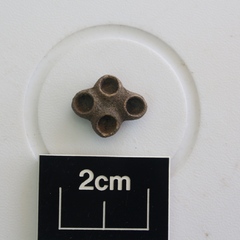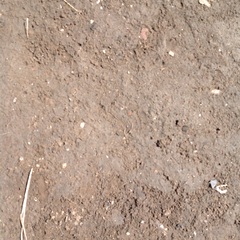- A fossil called Carboniferous crinoid known as a St Cuthbert's bead, associated with Saint Cuthbert in the 12th c. AD.
Interpretation
-
- Carboniferous crinoid. Known colloquially as “St Cuthbert’s Beads” found commonly on the coast of the Holy Island. Probably first became associated with the cult of Saint Cuthbert in the 12th century AD (Lane and Ausich 2001). Despite local source probably arrived on site having been brought from beach. Ctxt 3003 (Subsoil cleaning layer). Lane, N., & Ausich, W. (2001). The Legend of St Cuthbert's Beads: A Palaeontological and Geological Perspective. Folklore, 112(1), 65-7
-
- David Petts
- 3-5-2017
-
- previous interpretation deleted- should be for sf LDF2
-
- David Petts
- 3-5-2017
-
- Carboniferous crinoid. Known colloquially as “St Cuthbert’s Beads” found commonly on the coast of the Holy Island. Probably first became associated with the cult of Saint Cuthbert in the 12th century AD (Lane and Ausich 2001). Despite local source probably arrived on site having been brought from beach. Ctxt 3003 (Subsoil cleaning layer). Lane, N., & Ausich, W. (2001). The Legend of St Cuthbert's Beads: A Palaeontological and Geological Perspective. Folklore, 112(1), 65-7
-
- David Petts
- 3-5-2017
3-D Models
- No models found for this item
Comments
- 1 fragment,
From Context
-
Context: LDF_3006
- Anna Van Nostrand 19-6-2016

